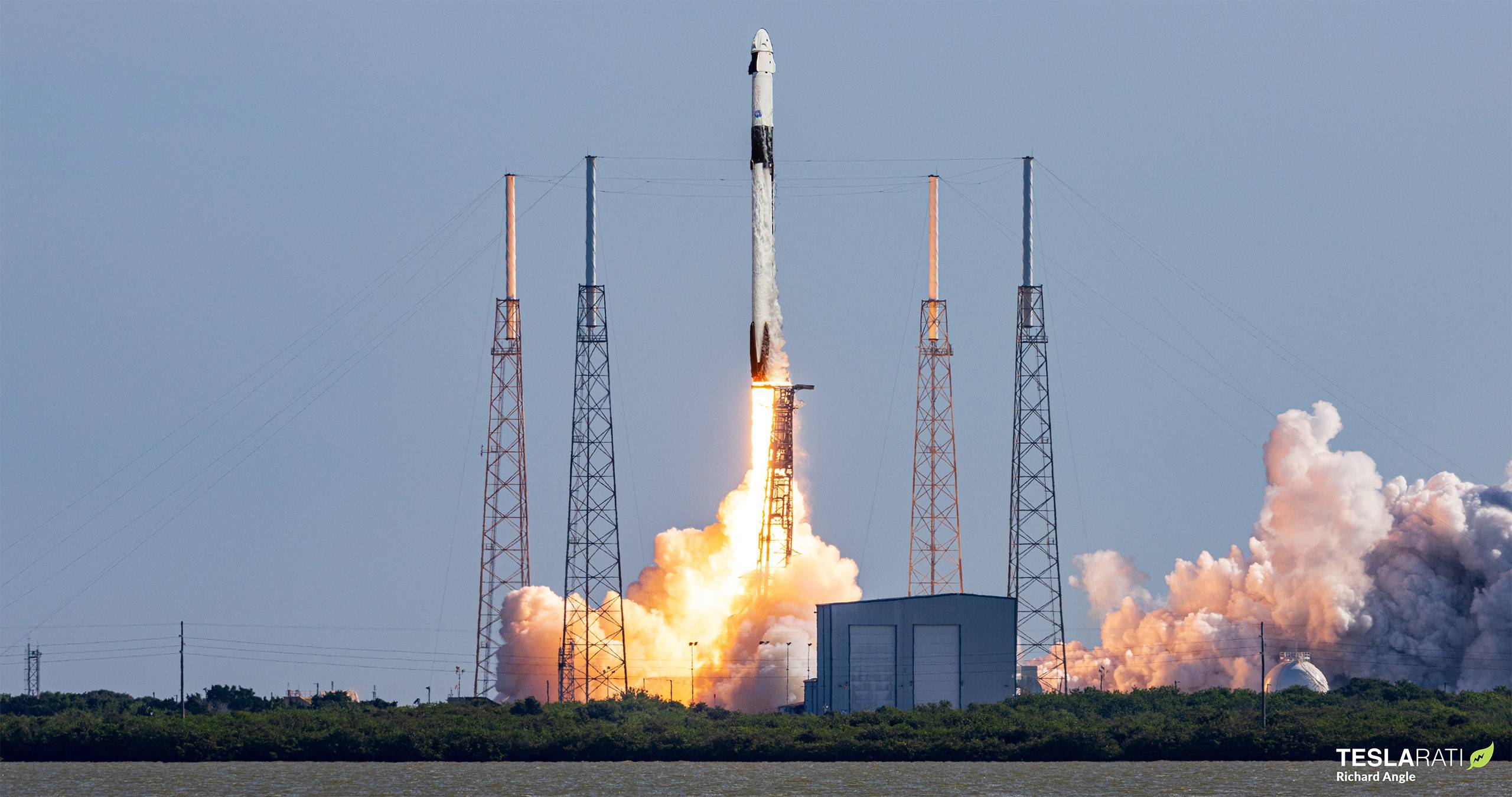
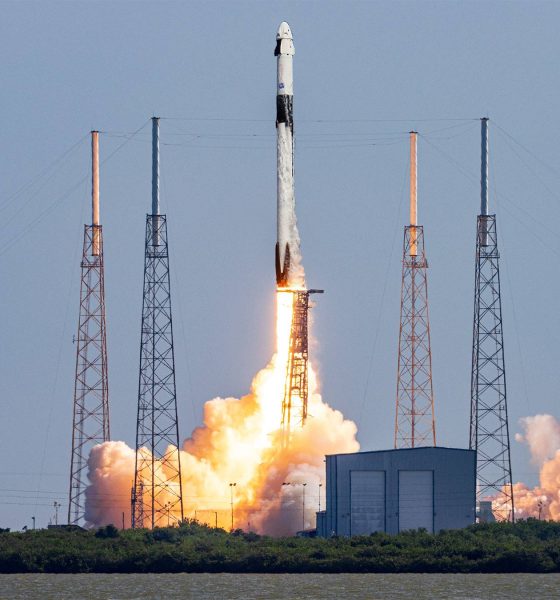
News
SpaceX’s backup Dragon launch pad on track for 2023 debut
SpaceX has begun building a backup launch pad for its Cargo and Crew Dragon spacecraft and says the facility could be ready for use as early as fall 2023.
Reuters first revealed those plans in June 2022. They arose because NASA reportedly told SpaceX it was worried that the company’s first Florida Starship launch site – colocated at the only pad currently able to launch SpaceX Dragon spacecraft – could add too much risk. In September 2022, NASA and SpaceX acknowledged plans to modify LC-40 for Dragon launches and indicated that both parties had decided to proceed.
Four months later, SpaceX and NASA have provided another press conference update. Officials confirmed that construction is already partially underway and reported that LC-40 could be ready to support its first Dragon launch less than a year from now.
The update that's rolling out to the fleet makes full use of the front and rear steering travel to minimize turning circle. In this case a reduction of 1.6 feet just over the air— Wes (@wmorrill3) April 16, 2024
Because Boeing’s comparable Starliner capsule is years behind schedule and still unqualified to launch humans, NASA has relied almost exclusively on SpaceX’s Crew Dragon to launch its astronauts to the International Space Station (ISS) since 2020. Starliner should be ready to supplement Crew Dragon’s operational astronaut launches by the end of 2023 or early 2024, alleviating some of that pressure.
NASA, however, chose to develop two spacecraft to guarantee that one spacecraft would likely be available if the other was grounded for any reason. Adding the possibility that a giant, new, experimental rocket (Starship) could potentially halt all SpaceX Dragon launches in one fell swoop was apparently one bridge too many for the agency.
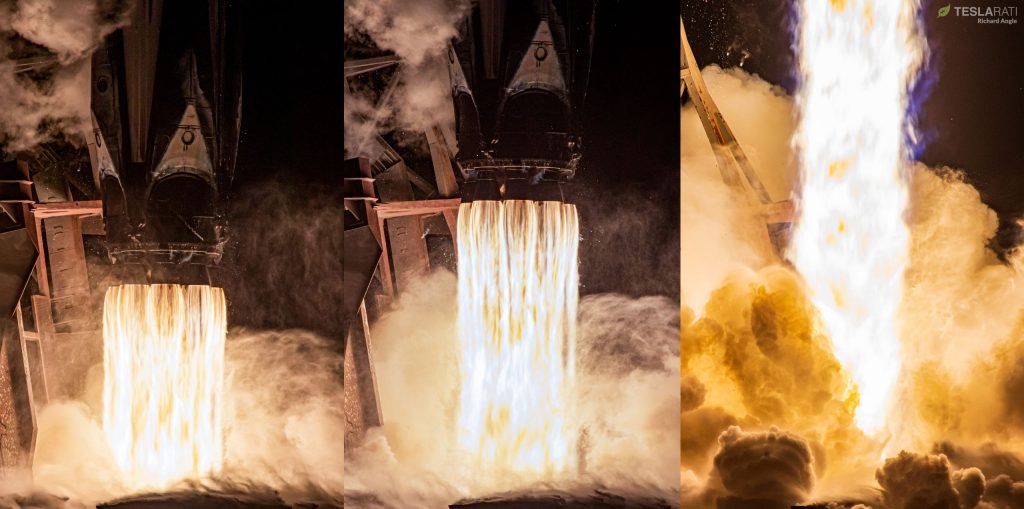
SpaceX’s answer to the problem was about as simple, elegant, and cheap as possible. The company has two operational Falcon launch pads in Florida, and it proposed to modify the second pad. SpaceX’s Cape Canaveral Space Force Station (CCSFS) LC-40 pad is located on a secure military base and has an even longer history of successful Falcon 9 launches than Pad 39A. It also appears that its layout will allow SpaceX to add a Dragon access tower without requiring major redesigns or months of downtime.
LC-40 is SpaceX’s most productive launch pad by far, and the company intends to launch up to 100 times in 2023. It’s thus crucial that the pad remains as active as possible as it’s modified – a major challenge. A combination of luck and the fact that the launch pad is already operational is the only reason that’s possible.
Modifying SpaceX’s busiest pad
In theory, SpaceX needs to do relatively little to enable Dragon launches out of LC-40. Dragon spacecraft are processed for flight at a separate facility and only head to the pad once they’re ready to be attached to a Falcon 9 rocket. The biggest modification LC-40 needs is a launch tower, but SpaceX ironically has experience building giant towers in sections – and offsite – through Starship.
LC-40’s Dragon access tower requires far less complex plumbing and should be smaller and easier to prefabricate and assemble. Regulatory documents indicate that the new tower will stand 81 meters (265 feet) tall – almost a third shorter than the 110-meter-tall tower SpaceX modified at Pad 39A for the same purpose. LC-40 will also need a swinging access arm to connect the tower to Dragon’s hatch. That arm can also be constructed offsite, further reducing the amount of downtime required.
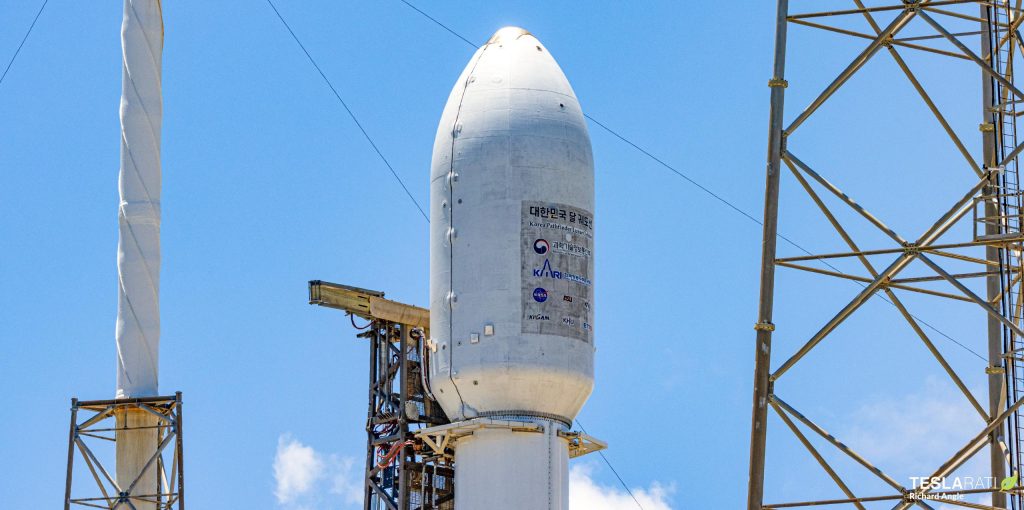
The most disruptive modifications may involve LC-40’s transporter/erector (T/E) device, which rolls Falcon 9 out to the pad, raises it vertical, holds it down with giant clamps; and hosts a maze of plumbing that fuels, pressurizes, and powers the rocket. The top of LC-40’s T/E is fitted with a brace designed to support Falcon payload fairings. In comparison, 39A’s T/E was designed with swappable ‘heads’ that allow SpaceX to switch between Dragon and fairing configurations in a matter of days. The top of LC-40’s T/E also appears to be somewhat removable, but SpaceX may still have to halt launches for a few weeks to get the T/E up to spec and modified for Dragon.
SpaceX says that LC-40 will be ready to support its first Dragon launch as early as fall (Q4) 2023. Its first Dragon mission will carry cargo to the ISS, meaning that the tower, arm, and pad will not need to be immediately human-rated. In theory, SpaceX could even launch Cargo Dragon 2 from LC-40 without a tower or arm, as the only purpose of the tower during uncrewed missions is to load volatile cargo at the last possible second. SpaceX could even revert to a practice that dates back to its original Dragon 1 spacecraft and devise a method to late-load cargo while Falcon 9 and Dragon are still horizontal.
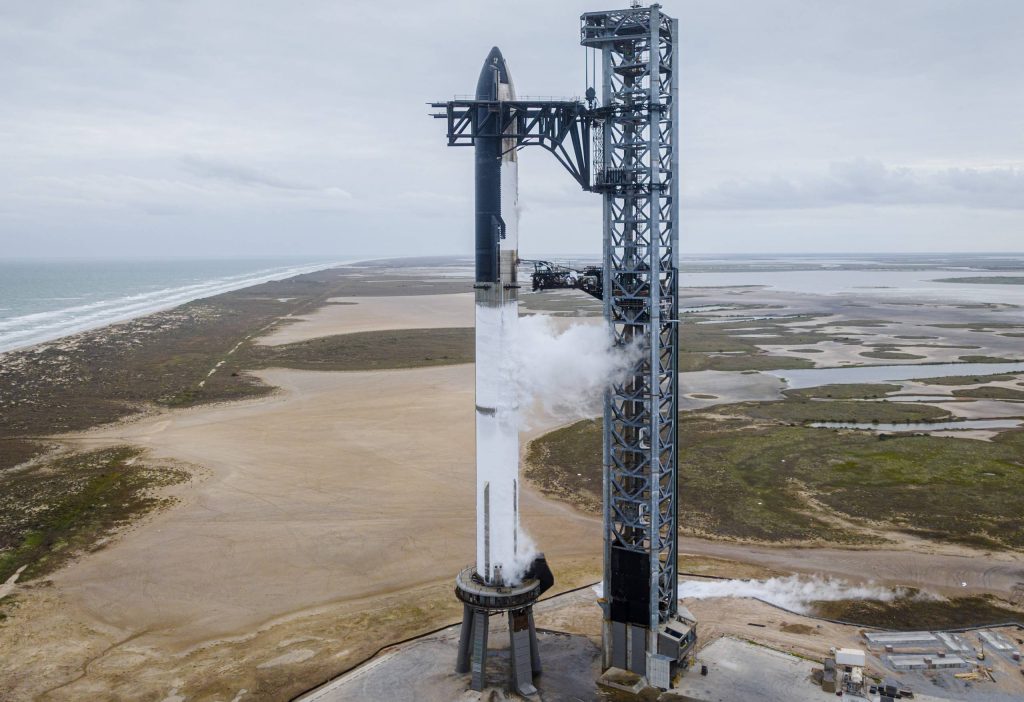
The tower and access arm are only essential for Crew Dragon launches, during which astronauts must board the spacecraft a few hours before liftoff. More importantly, the same arm and tower would be used to escape Dragon and Falcon 9 in case of a minor emergency. NASA requires an escape (egress) system to human-rate a launch pad and rocket. SpaceX met that requirement at Pad 39A with a “slidewire basket” system that carries astronauts to a concrete bunker several hundred feet away from the rocket. Before LC-40 can be human-rated, SpaceX will likely need to build the same basket-and-bunker system or come up with a viable alternative.
Once complete, SpaceX will have two pads capable of supporting all Crew and Cargo Dragon launches. With that redundancy in place, NASA should be far more open to regular launches of SpaceX’s next-generation Starship rocket out of Pad 39A. Access to multiple pads will likely be essential for Starship to complete NASA’s Human Landing System (HLS) contracts, which will culminate in the giant rocket sending humans back to the Moon for the first (and second) time in half a century in the mid-to-late-2020s.

News
Tesla hints at Starlink integration with recent patent
“By employing polymer blends, some examples enable RF transmission from all the modules to satellites and other communication devices both inside and outside the vehicle.”

Tesla hinted at a potential Starlink internet terminal integration within its vehicles in a recent patent, which describes a vehicle roof assembly with integrated radio frequency (RF) transparency.
The patent, which is Pub. No U.S. 2025/0368267 describes a new vehicle roof that is made of RF-transparent polymer materials, allowing and “facilitating clear communication with external devices and satellites.”
Tesla believes that a new vehicle roof design, comprised of different materials than the standard metallic or glass elements used in cars today, would allow the company to integrate modern vehicular technologies, “particularly those requiring radio frequency transmission and reception.
Tesla has recently filed a US patent application on integrating RF transparent materials into the roof structure.
“facilitating clear communication with external devices and satellites”
Tesla fleet is getting @Starlink connectivity integration soon. LFG @Tesla @elonmusk… pic.twitter.com/bLa8YtPLd1
— Chansoo Byeon (@Chansoo) December 9, 2025
Instead of glass or metallic materials, Tesla says vehicles may benefit from high-strength polymer blends, such as Polycarbonate, Acrylonitrile Butadiene Styrene, or Acrylonitrile Styrene Acrylate.
These materials still provide ideal strength metrics for crashworthiness, stiffness for noise, vibration, and harshness control, and are compliant with head impact regulations.
They would also enable better performance with modern technologies, like internet terminals, which need an uninterrupted signal to satellites for maximum reception. Tesla writes in the patent:
“By employing polymer blends, some examples enable RF transmission from all the modules to satellites and other communication devices both inside and outside the vehicle.”

One of the challenges Tesla seems to be aware of with this type of roof design is the fact that it will still have to enable safety and keep that at the forefront of the design. As you can see in the illustration above, Tesla plans to use four layers to increase safety and rigidity, while also combating noise and vibration.
It notes in the patent that disclosed examples still meet the safety requirements outlined in the Federal Motor Vehicle Safety Standards (FMVSS).
Starlink integrated directly into Tesla vehicles would be a considerable advantage for owners. It would come with a handful of distinct advantages.
Initially, the inclusion of Starlink would completely eliminate cellular dead zones, something that is an issue, especially in rural areas. Starlink would provide connectivity in these remote regions and would ensure uninterrupted service during road trips and off-grid adventures.
It could also be a critical addition for Robotaxi, as it is crucial to have solid and reliable connectivity for remote monitoring and fleet management.
Starlink’s growing constellation, thanks to SpaceX’s routine and frequent launch schedule, will provide secure, stable, and reliable internet connectivity for Tesla vehicles.
Although many owners have already mounted Starlink Mini dishes under their glass roofs for a similar experience, it may be integrated directly into Teslas in the coming years, either as an upgrade or a standard feature.
News
Tesla supplements Holiday Update by sneaking in new Full Self-Driving version
It seems Tesla was waiting for the Hardware 4 rollout, as it wanted to also deploy a new Full Self-Driving version to those owners, as it appeared in the release notes for the Holiday Update last night.

Tesla has surprised some owners by sneaking in a new Full Self-Driving version with the wide release of the Holiday Update, which started rolling out to Hardware 4 owners on Friday night.
Tesla has issued a controlled and very slow release pattern with the Holiday Update, which rolls out with Software Version 2025.44.25.5.
For the past two weeks, as it has rolled out to Hardware 3 and older Tesla owners, the company has kept its deployment of the new Software Version relatively controlled.
It seems Tesla was waiting for the Hardware 4 rollout, as it wanted to also deploy a new Full Self-Driving version to those owners, as it appeared in the release notes for the Holiday Update last night.
Tesla Full Self-Driving v14.2.1.25 made its first appearance last night to Hardware 4 owners who are members of the Early Access Program (EAP). It appears to be a slight refinement from FSD v14.2.1, which has been out for a couple of weeks.
Tesla v2025.44.25.5 Holiday update incoming
Also Full Self-Driving v14.2.1.25!!! pic.twitter.com/74D7S0UGXz
— TESLARATI (@Teslarati) December 13, 2025
Many owners welcome the new FSD version, us included, because we’ve been less than impressed with v14.2.1. We have experienced some minor regressions with v14.2.1, especially with Speed Limit recognition, Speed Profile tinkering, and parking performance.
As it stands, Full Self-Driving is still particularly impressive, but Tesla is evidently having an issue with some of the adjustments, as it is still refining some of the performance aspects of the suite. This is expected and normal with some updates, as not all of them are an improvement in all areas; we routinely see some things backtrack every once in a while.
This new FSD version is likely to take care of those things, but it also includes all of the awesome Holiday Update features, which include:
- Grok with Navigation Commands (Beta) – Grok will now add and edit destinations.
- Tesla Photobooth – Take pictures inside your car using the cabin-facing camera
- Dog Mode Live Activity – Check on your four-legged friend on your phone through periodic snapshots taken of the cabin
- Dashcam Viewer Update – Includes new metrics, like steering wheel angle, speed, and more
- Santa Mode – New graphics, trees, and a lock chime
- Light Show Update – Addition of Jingle Rush light show
- Custom Wraps and License Plates – Colorizer now allows you to customize your vehicle even further, with custom patterns, license plates, and tint
- Navigation Improvements – Easier layout and setup
- Supercharger Site Map – Starting at 18 pilot locations, a 3D view of the Supercharger you’re visiting will be available
- Automatic Carpool Lane Routing – Navigation will utilize carpool lanes if enabled
- Phone Left Behind Chime – Your car will now tell you if you left a phone inside
- Charge Limit Per Location – Set a charge limit for each location
- ISS Docking Simulator – New game
- Additional Improvements – Turn off wireless charging pad, Spotify improvements, Rainbow Rave Cave, Lock Sound TRON addition
Tesla also added two other things that were undocumented, like Charging Passport and information on USB drive storage to help with Dashcam.
Cybertruck
Tesla updates Cybertruck owners about key Powershare feature

Tesla is updating Cybertruck owners on its timeline of a massive feature that has yet to ship: Powershare with Powerwall.
Powershare is a bidirectional charging feature exclusive to Cybertruck, which allows the vehicle’s battery to act as a portable power source for homes, appliances, tools, other EVs, and more. It was announced in late 2023 as part of Tesla’s push into vehicle-to-everything energy sharing, and acting as a giant portable charger is the main advantage, as it can provide backup power during outages.
Cybertruck’s Powershare system supports both vehicle-to-load (V2L) and vehicle-to-home (V2H), making it flexible and well-rounded for a variety of applications.
However, even though the feature was promised with Cybertruck, it has yet to be shipped to vehicles. Tesla communicated with owners through email recently regarding Powershare with Powerwall, which essentially has the pickup act as an extended battery.
Powerwall discharge would be prioritized before tapping into the truck’s larger pack.
However, Tesla is still working on getting the feature out to owners, an email said:
“We’re writing to let you know that the Powershare with Powerwall feature is still in development and is now scheduled for release in mid-2026.
This new release date gives us additional time to design and test this feature, ensuring its ability to communicate and optimize energy sharing between your vehicle and many configurations and generations of Powerwall. We are also using this time to develop additional Powershare features that will help us continue to accelerate the world’s transition to sustainable energy.”
Owners have expressed some real disappointment in Tesla’s continuous delays in releasing the feature, as it was expected to be released by late 2024, but now has been pushed back several times to mid-2026, according to the email.
Foundation Series Cybertruck buyers paid extra, expecting the feature to be rolled out with their vehicle upon pickup.
Cybertruck’s Lead Engineer, Wes Morrill, even commented on the holdup:
As a Cybertruck owner who also has Powerwall, I empathize with the disappointed comments.
To their credit, the team has delivered powershare functionality to Cybertruck customers who otherwise have no backup with development of the powershare gateway. As well as those with solar…
— Wes (@wmorrill3) December 12, 2025
He said that “it turned out to be much harder than anticipated to make powershare work seamlessly with existing Powerwalls through existing wall connectors. Two grid-forming devices need to negotiate who will form and who will follow, depending on the state of charge of each, and they need to do this without a network and through multiple generations of hardware, and test and validate this process through rigorous certifications to ensure grid safety.”
It’s nice to see the transparency, but it is justified for some Cybertruck owners to feel like they’ve been bait-and-switched.








